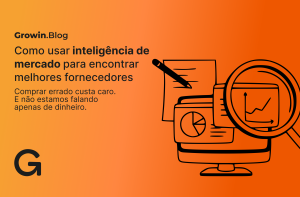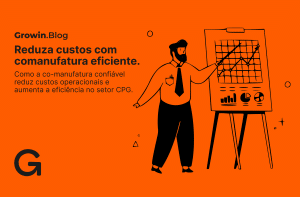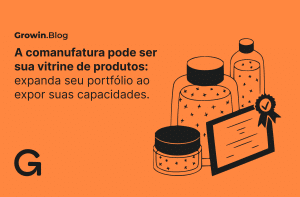In the competitive beverage industry, companies are constantly seeking innovative ways to capture market share and meet evolving consumer demands. However, the challenge lies in balancing the speed of innovation with cost efficiency. Let’s see how beverage companies can strike this balance, providing insights from real-world cases and data-driven analysis.
The Importance of Innovation in the Beverage Industry
Innovation is critical in the beverage industry for several reasons:
- Consumer Preferences: Modern consumers are more health-conscious, seeking beverages that offer functional benefits such as energy boosts, hydration, and nutritional value.
- Market Saturation: With numerous players in the market, differentiation through unique products is essential.
- Regulatory Changes: Compliance with new regulations regarding health and safety can drive the need for new product formulations.
- Technological Advancements: Innovations in packaging, production processes, and ingredient sourcing can significantly impact product offerings.
The Cost-Speed Dilemma
Speed of Innovation
Speed to market is crucial for several reasons:
- First-Mover Advantage: Being the first to introduce a new product can establish a strong market presence and brand loyalty.
- Market Responsiveness: Quickly responding to consumer trends can capture a larger share of the market.
- Competitive Edge: Staying ahead of competitors by rapidly launching new products is vital in a crowded market.
Cost Efficiency
Cost management is equally important:
- Profit Margins: Keeping production costs low ensures better profit margins.
- Pricing Strategy: Cost-efficient production allows for competitive pricing strategies.
- Resource Allocation: Efficient use of resources ensures sustainability and long-term growth.
Case Study: PepsiCo’s Investment in Technology
PepsiCo has invested heavily in technology to streamline its innovation processes, recognizing the critical role that speed and efficiency play in maintaining a competitive edge in the beverage industry. The integration of advanced digital tools for data analysis and consumer insights has enabled the company to predict emerging trends and respond swiftly to shifting market demands. By harnessing the power of big data and machine learning algorithms, PepsiCo can analyze vast amounts of consumer data to identify patterns and preferences, which in turn informs its product development strategies.
Additionally, PepsiCo’s “Connect to Innovate” program is a prime example of how the company leverages external partnerships to drive innovation. This initiative fosters collaborations with startups, research institutions, and technology providers, bringing fresh ideas and cutting-edge technologies into PepsiCo’s product development pipeline. These partnerships are crucial in accelerating the innovation process, as they allow PepsiCo to tap into external expertise and resources, reducing the time and cost associated with in-house development.
A notable success stemming from this strategy is the launch of Bubly, a line of flavored sparkling water. The development of Bubly was driven by comprehensive consumer data analysis, which highlighted a growing demand for healthier, sugar-free beverage options. By identifying this trend early, PepsiCo was able to rapidly prototype and test Bubly, ensuring that the product met consumer expectations before a full-scale launch. This data-driven approach allowed PepsiCo to bring Bubly to market quickly, efficiently, and without significant cost overruns.
Furthermore, PepsiCo’s use of agile methodologies in product development, such as iterative testing and rapid prototyping, played a critical role in the successful launch of Bubly. These practices enabled the company to refine the product based on real-time feedback, ensuring a high-quality offering that resonated with health-conscious consumers. The success of Bubly not only illustrates the effectiveness of PepsiCo’s innovation strategy but also underscores the importance of leveraging technology and partnerships to balance cost efficiency with the need for speed in product development.
By continuously investing in technology and fostering strategic collaborations, PepsiCo remains at the forefront of beverage innovation, capable of swiftly adapting to market changes and delivering products that meet the evolving preferences of consumers.
Strategies for Balancing Cost and Speed
1. Lean Innovation Processes
Adopting lean principles in innovation can help beverage companies minimize waste and maximize efficiency. This involves:
- Rapid prototyping
- Iterative testing
- Cross-functional collaboration
2. Strategic Partnerships
Forming alliances with startups, research institutions, and technology providers can accelerate innovation while sharing costs. These partnerships can provide access to new technologies and expertise without the need for significant in-house investments.
3. Consumer-Centric Approach
Leveraging consumer insights through data analytics ensures that innovations align with market needs, reducing the risk of costly failures. Companies can use social media, surveys, and focus groups to gather real-time feedback.
4. Flexible Supply Chains
Building a flexible supply chain that can quickly adapt to new product requirements helps in reducing lead times and costs. This includes maintaining strong relationships with suppliers and investing in scalable production facilities.
Need for speed
Balancing cost-efficiency with the need for speed in beverage innovation is a complex but achievable goal. By adopting agile methodologies, leveraging technology, and focusing on consumer needs, beverage companies can successfully navigate the challenges of innovation. Real-world examples from industry leaders like Coca-Cola and PepsiCo illustrate that a strategic approach to innovation not only drives market success but also ensures sustainable growth.
In conclusion, the beverage industry’s future belongs to those who can innovate swiftly without compromising on cost efficiency. By learning from successful case studies and employing data-driven strategies, companies can achieve this delicate balance and thrive in a competitive landscape.




